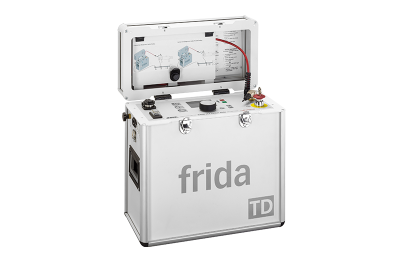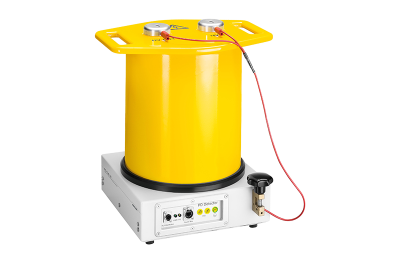

Whether during the commissioning stage or operation, it is essential to ensure the minimum performance requirements of medium-voltage insulated cables. To achieve this, we must always conduct tests and diagnostics aimed at preventing potential failures before they compromise operations. One of the maintenance techniques focused on this objective is Very Low Frequency (VLF) applied voltage testing. In these tests, cable insulation is subjected to predetermined levels of operational overvoltage for a specified duration, in accordance with the IEEE 400.2-2024 international guide. The primary purpose is to identify weak points or defects in the cable’s insulating material. In the short term, these failures could compromise the reliability of medium-voltage networks.
Effectiveness of VLF Applied Voltage Testing
But are VLF tests really effective? At what stages of the service life of medium-voltage insulated cables should these tests be performed? In the following sections, we will answer these questions. We will also explore real case studies that demonstrate the usefulness of this technique in improving the reliability of medium-voltage networks.
Procedures for VLF Applied Voltage Testing
Alternating electrical voltage levels, at 0.1Hz, for predetermined periods. This process ensures that the cable is exposed to a voltage higher than its nominal rating without damaging the insulating material. Under these conditions, defects exhibit an accelerated progression and grow more rapidly than they would under normal operating voltage.
As a result, defects that are sufficiently developed and have a high probability of failure during operation typically fail under test conditions. Various studies have demonstrated the effectiveness of this method in enhancing reliability and reducing the number of failures during operation.
Testing Medium-Voltage Cables Is Essential
Failures that occur during full operation are often critical and harmful to circuits. Based on this study, we can conclude that conducting applied voltage tests may lead to an increase in the total number of failures detected during testing. However, there is a significant reduction in the failure rate during operation. On the other hand, if no testing is performed in an attempt to reduce the total number of failures observed, there will be a considerable increase in the failure rate during operation.
Related services

VIOLA TD
BAUR viola TD is an device recommended for performing VLF (Very Low Frequency) withstand test and dissipation factor (Tan Delta) test on insulated cables rated up to 20/35 kV.

FRIDA TD
BAUR frida TD is the recommended device for performing VLF (Very Low Frequency) withstand test and dissipation factor (Tan Delta) test on insulated cables rated up to 12/20 kV.

PD-TAD 62
The PD-TaD 62 is a portable Partial Discharge diagnostic system used in conjunction with a VLF source for diagnosing medium-voltage insulated cables.


